How invasion of enormous wild beasts has left shocked residents in idyllic Wyoming mountain towns fearing for their lives: ‘I do a lot of praying’
Residents of idyllic mountain villages are watching with concern as the grizzly bear population has exploded.
Since grizzly bears were listed as endangered in 1975, when only 700 individuals patrolled the lower 48 states, they’ve made a comeback.
Sightings are now being reported in places in the Northern Rockies, including towns, farms and ranches, where they have not been seen for more than a century.
Biologists believe the population has now grown to at least 2,000 bears and that the bears are now regularly found outside Glacier and Yellowstone National Parks.
Cecil and Bridget Gallagher, who live in Clark, Wyoming, just outside Cody, are harvesting sweet corn on their farm. They say it’s giving them an adrenaline rush right now.
Since they were listed as endangered in 1975, when only 700 of them patrolled the lower 48 states, grizzly bears have made a comeback
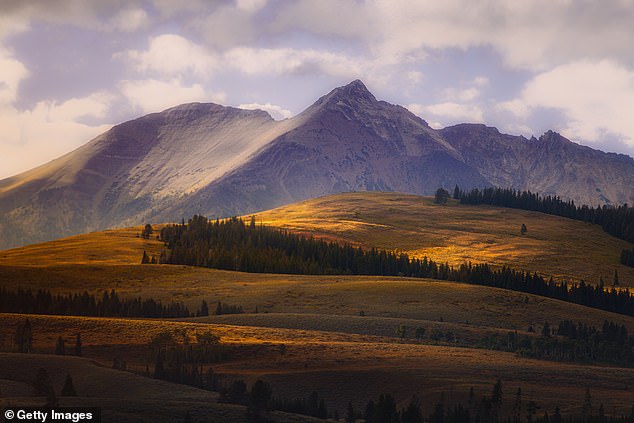
Places like towns, farms and ranches in the Northern Rockies where they haven’t been seen in over a century are reporting sightings. Yellowstone National Park is shown here
About ten years ago, the animals first appeared near their ranch, making for an odd sight.
Since then, the bears have been able to reach the cornfields, with four being captured by state game wardens last year.
As harvest approaches, the Gallaghers fear for themselves and their children as they walk through the fields, trying to make enough noise to ward off bears.
Bridget told the outlet, “I’m praying a lot. Next week we start picking sweet corn. A few days ago we saw our first set of bear tracks around the field. The good fortune is starting again.”
Elliott Lee woke up one morning to loud screeching from the chicken coop in his backyard and when he ran outside, he discovered a grizzly bear.
Lee, 78, told the newspaper: “The fence was down and I looked up and saw a grizzly bear about 25 to 30 feet away.”
‘He had killed four chickens and was eating them.’
Dana Darlington, who runs a ranch on the Montana prairie where grizzlies haven’t been seen in at least 100 years, said he found the remains of a 120-pound calf in April.
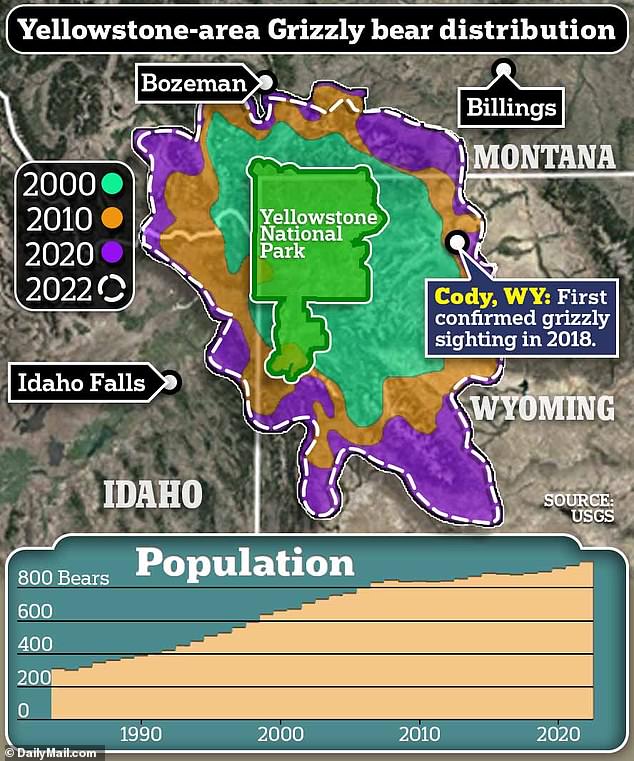
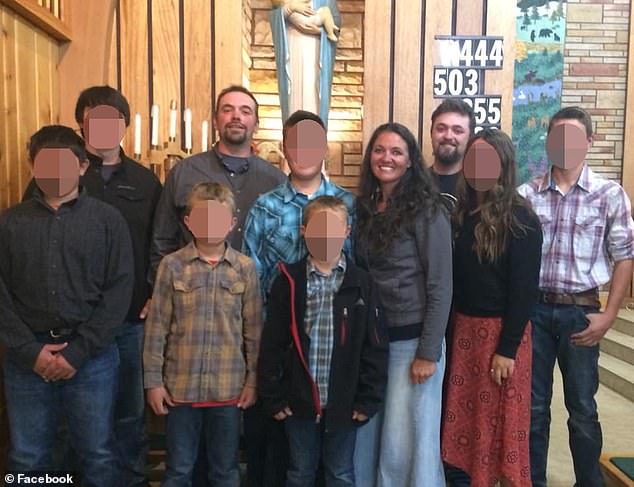
Cecil and Bridget Gallagher, seen here with their family, harvest sweet corn on their farm, which is now giving them an adrenaline rush.
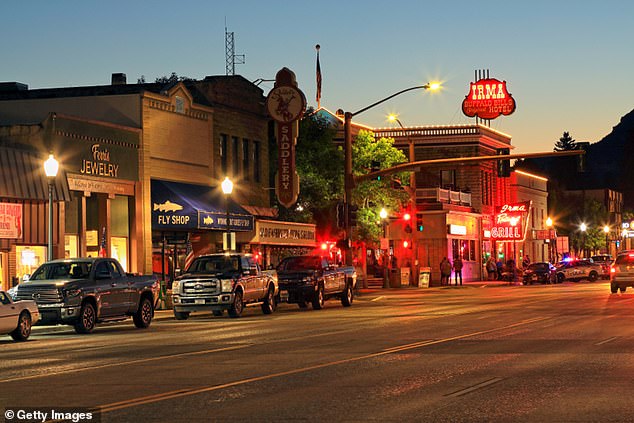
Idaho, Montana and Wyoming, the city of Cody, Wyoming, seen here, are all now pushing to remove the grizzly from the protected list in order to manage its numbers through hunting.
State biologists later confirmed to Darlington that the calf had been attacked by a bear.
The 60-year-old told the outlet: “I never thought I would ever see a grizzly killed here. I’m just stunned by what’s going on here.”
Carnivorous biologist Luke Ellsbury said his “holy shit” moment came last year when a grizzly showed up in the Bighorn Mountains.
Ellsbury told the newspaper that the animal must have crossed the Bighorn Basin, a vast plateau about 100 miles (160 kilometers) wide.
He told the outlet, “We thought it would take a couple more years,” adding that his Game and Fish department had to euthanize the animal after it killed livestock.
Last year, in a rare move, Ellsbury also chased away a grizzly bear along the Shoshone River, near a busy nature trail, by firing blanks.
His office provides locals with bear spray and even lets people practice on a Robobear, a remote-controlled grizzly bear that attacks.
Ranch manager Mark McCarty reports that he loses 50 to 75 calves each year to bears and other predators.
He told the newspaper that the state is compensating the ranch, but not all of the costs, adding that stressed cows reproduce less.
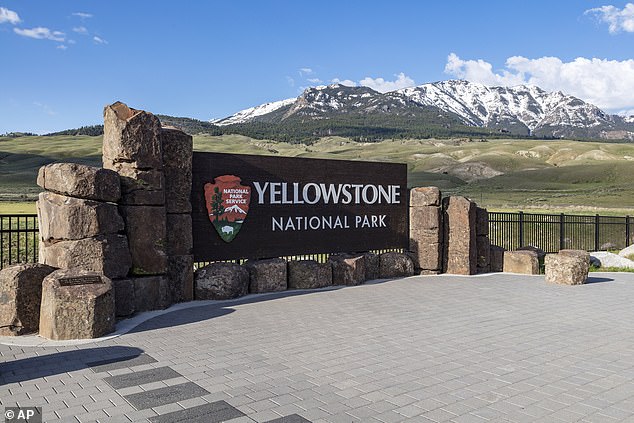
In Yellowstone, there is an average of only one grizzly attack per year due to bear-proof garbage cans, widespread use of bear spray and other safety measures
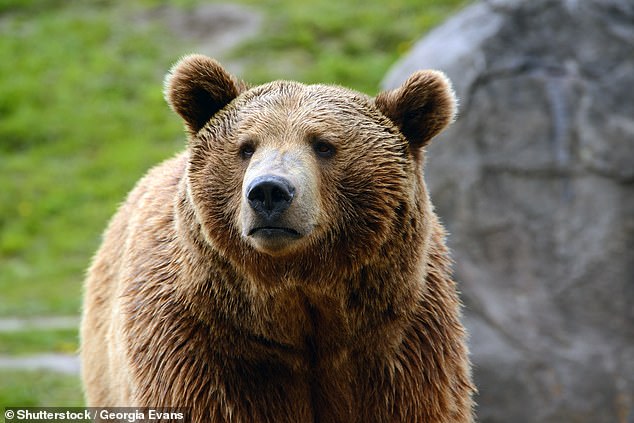
Despite the return and concern among people in the area, human deaths are still rare
McCarty said, “I don’t want to see the bears eliminated, but they’ve gotten to the point where they’re in trouble. It’s like a glass of water and the bears are pouring it over the edge.”
In May of this year, Shayne Patrick Burke, 35, was seriously injured in an attack in Grand Teton National Park in Wyoming.
He revealed in an Instagram post that he was in the “wrong place at the wrong time” when he was attacked by a mother grizzly bear.
The adult had been protecting her young, he said, resulting in a brutal attack that the war veteran described as the “most violent” he had ever witnessed.
He was convinced that a can of bear spray had saved his life as the beast gnawed at his hands, legs and neck, nearly killing him on the spot.
Idaho, Montana and Wyoming are all now pushing to remove the grizzly from the protected list so its numbers can be managed through hunting.

Burke revealed in an Instagram post that he was in the “wrong place at the wrong time” when a mother grizzly bear attacked him
Samantha Justice, 25, told the newspaper she wants the bears to be allowed to be hunted: “They should be afraid of us.”
Justice had booked rafting trips on a river where grizzly bears had attacked two boats, and he always carried a gun when he was in the woods.
Advocates of the grizzly bear are fighting to maintain protection for the animals, saying the population is nothing compared to the 50,000 that roamed the western United States 200 years ago.
David Mattson, a retired federal wildlife investigator, added: “We’re talking about an icon of our Western heritage and the last of the last.”
Mattson believes that bears and people can coexist as long as safety precautions are taken.
Despite the return and the concern among people in the area, human casualties remain low.
Since 1992, 165 injuries to humans have been recorded, 10 of which were fatal.
In Yellowstone, there is an average of only one grizzly bear attack per year, due to bear-proof garbage cans, widespread use of bear spray, and other safety measures.
But around the park, the number of conflicts with the animals has risen from 50 a year in the 1990s to over 400 in more recent years.
According to Frank van Manen, supervising research biologist for the Interagency Grizzly Bear Study Team, the animals are known to break into buildings, kill livestock and pets, and assault people.
The team also found that the bear’s habitat has expanded to a whopping 69,000 square kilometers since 1990.
Van Manen told the newspaper that the biggest increase in conflicts is taking place in areas reclaimed by the bears and where many people live.

Advocates for the grizzly bears are fighting to keep them protected, saying the population is nothing compared to the 50,000 that roamed the western United States 200 years ago.
He added that grizzlies have learned that it is easier to hunt livestock or steal garbage than to hunt for food. “They are incredibly intelligent and resourceful animals.”
Due to the resurgence, the U.S. Fish and Wildlife Service decided in 2017 to remove grizzly bears from the endangered species list.
But the Ninth Circuit Court of Appeals in 2020 agreed with a lawsuit by environmental and tribal groups that the bears should remain protected
Montana and Wyoming have filed a petition to have the grizzly delisted.
According to the news agency, approximately $2 million is spent annually in Wyoming on conflicts with bears, of which $500,000 is spent on losses, such as livestock.
Fish and Wildlife officials say they are reviewing the status of all lower states, not just Yellowstone, with a decision expected next year.
